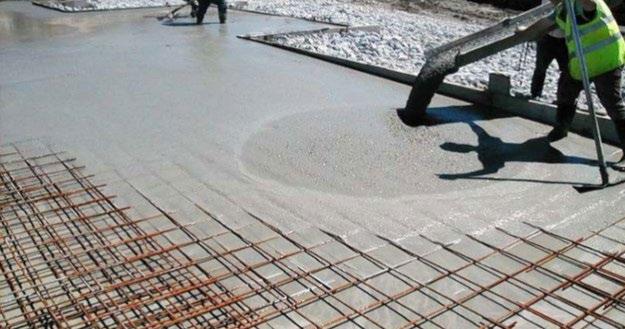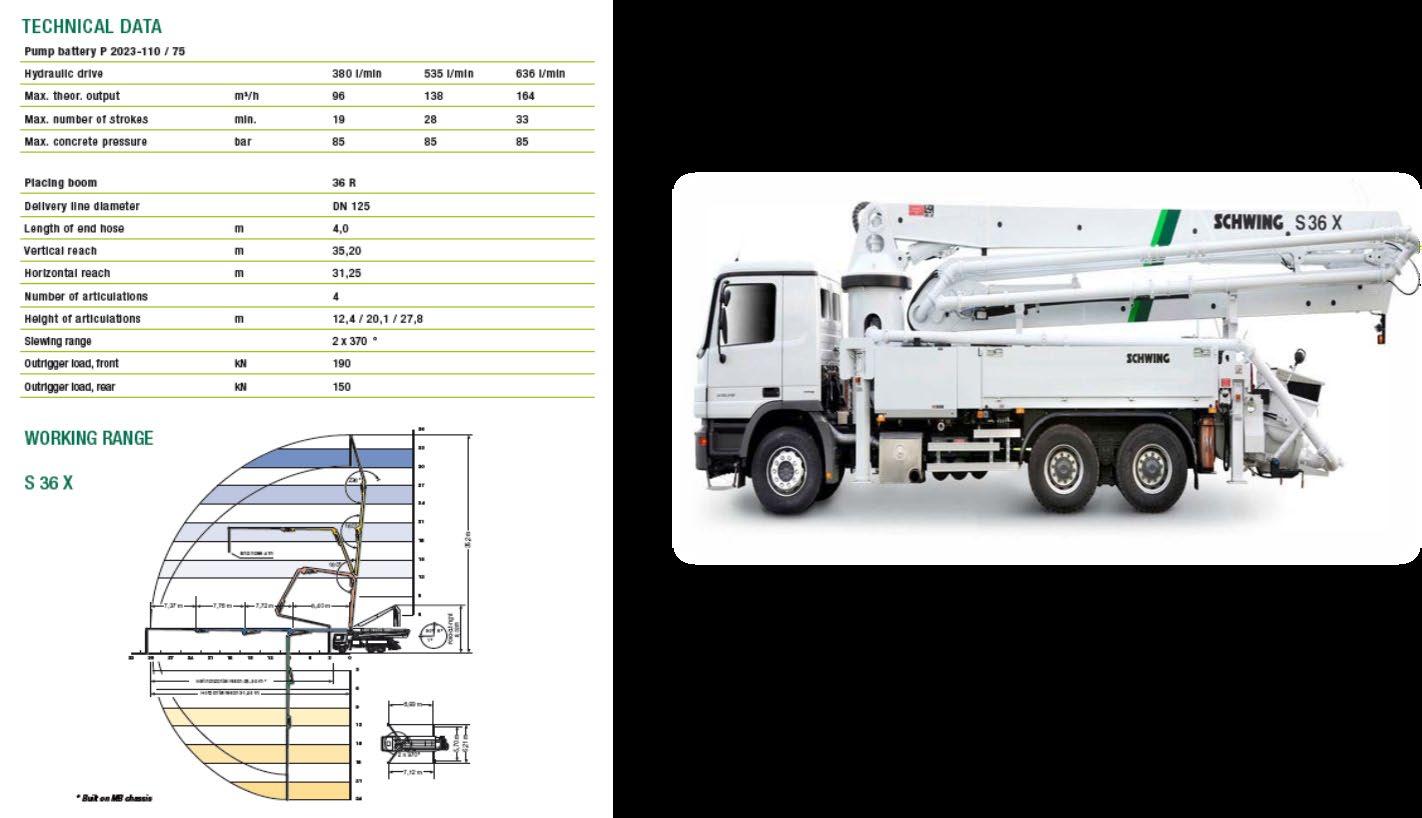company profile

CONCRETE SOLUTIONS








From The CEO
Since its establishment in 2015, 3S Ready Mix has achieved excellent progress in the market.
Through the years, 3S Ready Mix has delivered its integrated concrete services to many projects & companies in Egypt.
3S Ready Mix has been a trusted subsidiary company to Hassan Allam Holding, since its establishment in 2015. The company has since charted a steady course, delivering both economic and intrinsic value to our stakeholders, in the process building a portfolio that features some of the most iconic projects in Egypt.
Throughout this rapid growth, 3S Ready Mix continues to be have commitment towards our customer and support them to achieve their requirements with best quality on due time.
Being part of a great Group like Hassan Allam Holdings is central to 3S Ready Mix ‘s philosophy, that workplace safety is just as important to 3S Ready Mix, as seeking mature talent, developing best practices and utilizing the most modern technologies to deliver on our commitments.
3S Ready Mix is committed to help our partners realize their vision with efficiency in a brave new world, where no ambition is too ambitious, and where partnership means much more than a signature or a contract.
3S Ready Mix is here to help manage your vision for a better future.
MOHAMED EL DAGHASHY
Mohamed El Daghashy


1 – House Keeping


3 – Isolation Procedures


5 – Working at heights

6 – Confined spaces

7 – Safety inductions & Trainings


1 - Standard Operating ProceduresTraining (SOPS Training)
- Drivers - Maintenance team
- Plant operators - QC technicians
- Pump operators
2 - Safety Campaigns
- Safety driving - Management
- Safety tours - participation
3 - Safety indicators
- LTIs - TRIs - Fatalities




1 - Aggregates
Which is made up of roughly 60% to 75% of ready-mix concrete’s volume, are obtained from quarries and aggregate banks.
2 - Additives
Are solid or liquid chemical substances that can be added to ready-mix concrete before or during preparation. Most commonly used additives either Improve a hardened concrete’s durability or reduce a concrete’s water content in an effort to shorten setting times.
3 - Water
This is the Mix’s vital fluid, Which sets of a chemical reaction when it comes into contact with the cement.
No other material rivals cement’s importance in the mix; It’s the ingredient that gives concrete its resistance. Although types II and IV are also employed, the most widely used cements are gray Portland type I and Pozzolana Portland type C2We used in our projects OPC , SRC , Type II , CEM III
During the mixing phase the different components come together to produce a uniform mass of concrete. Mixing time is registered from the moment material and water are poured into the cement mixer, and it begins rotating. While transporting concrete to a site, the cement mixer never stops revolving at a speed of two to six rotations / minute.

In a high hazard industry like construction, safety is an investment that provides real benefits. A safe work environment helps to keep skilled employees on the job and projects on track by reducing accidents that result in injuries and schedule delaysQ, while also reducing the risks of litigation and regulatory action.
Our top priority is customer satisfaction. Our team is very keen to providing customers with a unique level of service.
We provide the required services that exceed their expectations.
We offer you expert support and answer any questions or concerns you might have.
We also appreciate any feedback you’d like to give. It’s only through close relationships and ongoing dialogue with our customers that we’re able to better.

Grading (sieve analysis)
% passing sieve No.200
Moisture content
Unit weight and voids in aggregates
Clay lumps and friable particles
Specific gravity &absorption.
Resistance to abrasion using Los angles machine.
Potential reactivity.
ASTM C 136
ASTM C 117
ASTM C 566
ASTM C 29
ASTM C 142
ASTM C 127
ASTM C 131
ASTM C 289
ASTM D 4791
Flakiness and elongated particles. E . C for R.C
Chemical analysis(Chloride Sulfate). Structure limits
Once per day
Once per week
Once per month or when source change
Grading (sieve analysis)
% passing sieve No.200
Moisture content
Unit weight and voids in aggregates
Clay lumps and friable particles
Specific gravity &absorption.
Potential reactivity.
Organic impurities.
Chemical analysis(Chloride Sulfate).
ASTM C 117
ASTM C 136 Once per day
ASTM C 566
ASTM C 29 Once per week
ASTM C 142
ASTM C 289
ASTM C 40
ASTM C 128 - Once per month or when source change
E . C for R.C Structure limits
Time of setting by vicat apparatus. ASTM C 191
Fineteness (by Blain) apparatus ASTM C 204
Compressive strength ASTM C 109
Physical Analysis Once every month
Chemical analysis
Chemical analysis C3A content
Total alkali, SO3 ASTM C 114

Density
PH ASTM C 494
Chloride content
Solid content
ASTM C 494
One test each delivered
Once every month & when source change
Chemical analysis (Chloride –Sulfate T.D.S –pH)
E.C for RC Structures limits or project specs
Once every month

Visual inspection Every Truck Temperature 50/1m3 or 1/mix
Slump test ASTM C143 50/1m3 or 1/mix
Concrete cubes
Hardened Concrete density
Hardened Concrete Comp. strength
BS 1881 – Part 108
One set (6cubes) for every recipe/day or 1Set/100m3
BS 1881 – Part 114 at 7 days 3 cubes, at 28 days 3cubes
BS 1881 – Part 115 at 7 days 3 cubes, at 28 days 3cubes

Digital Compressive Strength 2000KN
For Cubes up to 150mm
Stainless Steel slump with accessories
Cubes 150*150*150mm (local) New
Air Meter type B
Tapes 2ms (local)
Digital Thermometers 50- to 150 with cable not probe
Dial Thermometers 0 to 60
Glass Thermometers 0 to 110 (local)
Digital or automatics scale 30Kg capacity , 5gm acc.
Digital scale 6Kg capacity, 0.1gm accuracy
Modar Mixer for Cement tests
Setting time apparatus (Vicat)
ITEM
ITEM
Crushing Value apparatus with accessories
3liters unit weight
Sample splitter
Cover & Pan
Pycnometer
Glass measuring cylinders 25
Glass measuring cylinders 100ml
Glass measuring cylinders 500ml
Glass measuring cylinders 1000ml
Glass Bakers 100ml
Glass Bakers 600ml
ITEM

Stoppered volumetric flask 1000ml
Scoops 1000ml
Aluminum pan Small
Aluminum pan Medium
Aluminum pan Large
Aluminum dish 200mm diameter
Hot plate
Dry oven 125liters
Brass brush
Steel brush
Rectangular trowel
Computer and printer
General purpose tool kit
Tamping rod for cubes






Is a composite material composed of coarse aggregate bonded together with a fluid cement which hardens over time.
Most concretes used are limebased concretes such as Portland cement concrete or concretes made with other hydraulic cements, such as cementfondue. However, road surfaces are also a type of concrete, asphalt concrete, where the cement material is bitumen, and polymer concretes are sometimes used where the cementing material is a polymer.


Mortars are used in masonry for joining stones, bricks, blocks etc. and plasters are used for rendering on the outside and inside of walls. The differences between mortar & plaster lie in the capacity of plasters to take better finish, which depend on a very large extent of the type of sand used in the mix. For plasters we use finer sand.
However the term mortar is also used loosely to refer to both plasters and mortar.

Is a low cost solution for an untracked section designed of concrete members. Uses steel fiber reinforcement in concrete to enhance the ability of structural members in order to carry significant stresses.
The use of fibers increases the toughness of concrete under any type of loads.
Fibers in concrete has the ability to absorb more energy.

Concrete which, through the use of high‐early‐strength cement or admixtures, is capable of attaining specified strength at an earlier age than normal concrete.

Self‐compacting concrete (SCC) is a flowing concrete mixture that is able to consolidate under its own weight. The highly fluid nature of SCC makes it suitable for placing in difficult conditions and in sections with congested reinforcement. Use of SCC can also help minimize hearing‐related damages on the worksite that are induced by vibration of concrete.
Another advantage of SCC is that the time required to place large sections is considerably reduced.

Is a concrete containing fibrous material which increases its structural integrity. It contains short discrete fibers that are uniformly distributed and randomly oriented.

Type of concrete which includes an expanding agent in that increases the volume of the mixture while giving additional qualities such as nailbility and lessened deadweight.


Slip form is a method of construction in which concrete is poured into the top of a continuously moving formwork.
As the concrete is poured, the formwork is raised vertically at a speed which allows the concrete to harden before it is free from the formwork at the bottom.
Successful slip form depends on the delivery of a high-performance concrete with uniform and predictable properties.
The essential slip form properties of the fresh concrete can be defined as the following;
• Slump (or workability)
• Setting time (at all times tailored to the intended lifting rate)
• Stability (absence of segregation)


Watertight designed to protect a structure from water ingress or to retain water within a structure, Watertight admixture reacts with the cement hydration process to form a hydrophobic ingredient to reduce the capillary suction and prevent the ingress of potentially deleterious soluble material, resulting in concrete with enhanced durability. Watertight concrete is used to water tank, pool and Basement.






















Mercedes Benz Actros 4041 / Truck mixer size 10m3

SCHWING–Truck Mounted 36 X Mobile pump

SCHWING–Truck Mounted S 47 SX Mobile pump


Address : 78 El-Moltaka El-Araby St., Ground Floor, Sheraton, Heliopolis, Cairo, Egypt
Telephone : +2 (02) 20644034
+2 (02) 20644092
+2 (02) 20644091